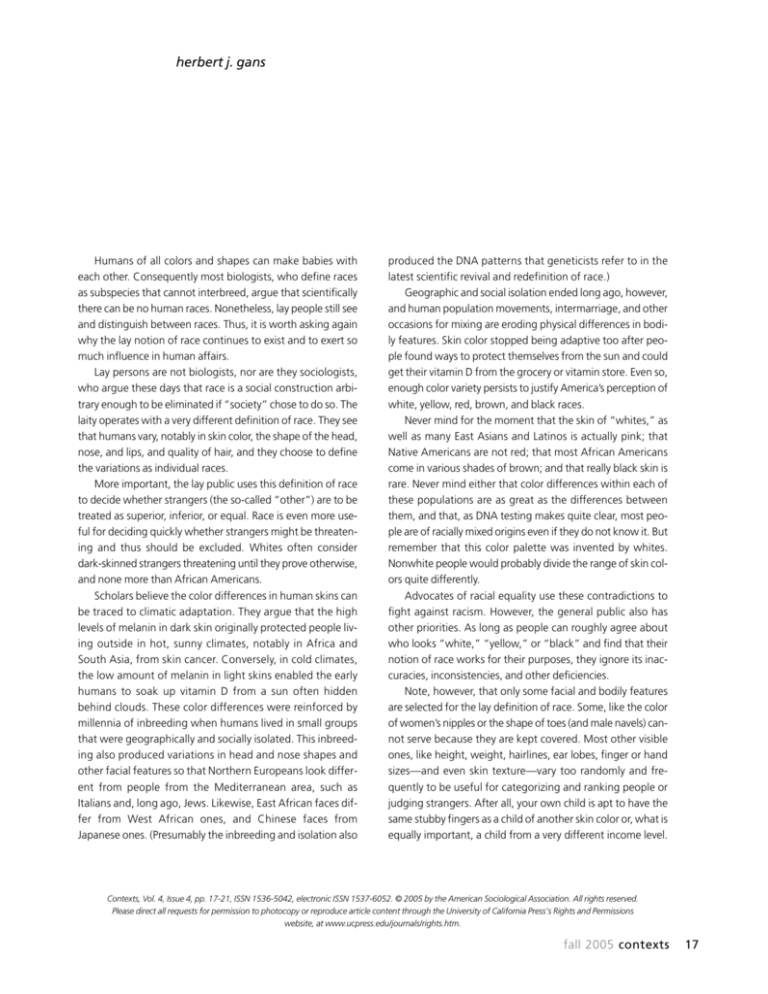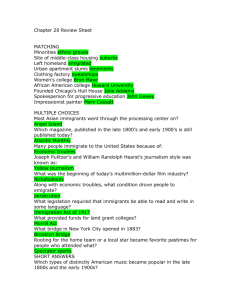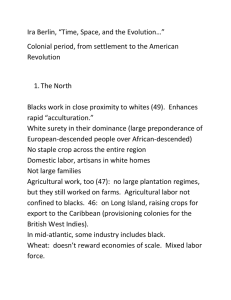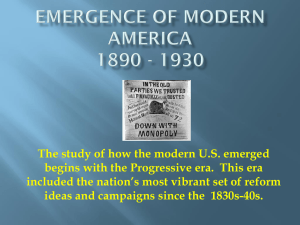
herbert j. gans
Humans of all colors and shapes can make babies with
each other. Consequently most biologists, who define races
as subspecies that cannot interbreed, argue that scientifically
there can be no human races. Nonetheless, lay people still see
and distinguish between races. Thus, it is worth asking again
why the lay notion of race continues to exist and to exert so
much influence in human affairs.
Lay persons are not biologists, nor are they sociologists,
who argue these days that race is a social construction arbitrary enough to be eliminated if “society” chose to do so. The
laity operates with a very different definition of race. They see
that humans vary, notably in skin color, the shape of the head,
nose, and lips, and quality of hair, and they choose to define
the variations as individual races.
More important, the lay public uses this definition of race
to decide whether strangers (the so-called “other”) are to be
treated as superior, inferior, or equal. Race is even more useful for deciding quickly whether strangers might be threatening and thus should be excluded. Whites often consider
dark-skinned strangers threatening until they prove otherwise,
and none more than African Americans.
Scholars believe the color differences in human skins can
be traced to climatic adaptation. They argue that the high
levels of melanin in dark skin originally protected people living outside in hot, sunny climates, notably in Africa and
South Asia, from skin cancer. Conversely, in cold climates,
the low amount of melanin in light skins enabled the early
humans to soak up vitamin D from a sun often hidden
behind clouds. These color differences were reinforced by
millennia of inbreeding when humans lived in small groups
that were geographically and socially isolated. This inbreeding also produced variations in head and nose shapes and
other facial features so that Northern Europeans look different from people from the Mediterranean area, such as
Italians and, long ago, Jews. Likewise, East African faces differ from West African ones, and Chinese faces from
Japanese ones. (Presumably the inbreeding and isolation also
produced the DNA patterns that geneticists refer to in the
latest scientific revival and redefinition of race.)
Geographic and social isolation ended long ago, however,
and human population movements, intermarriage, and other
occasions for mixing are eroding physical differences in bodily features. Skin color stopped being adaptive too after people found ways to protect themselves from the sun and could
get their vitamin D from the grocery or vitamin store. Even so,
enough color variety persists to justify America’s perception of
white, yellow, red, brown, and black races.
Never mind for the moment that the skin of “whites,” as
well as many East Asians and Latinos is actually pink; that
Native Americans are not red; that most African Americans
come in various shades of brown; and that really black skin is
rare. Never mind either that color differences within each of
these populations are as great as the differences between
them, and that, as DNA testing makes quite clear, most people are of racially mixed origins even if they do not know it. But
remember that this color palette was invented by whites.
Nonwhite people would probably divide the range of skin colors quite differently.
Advocates of racial equality use these contradictions to
fight against racism. However, the general public also has
other priorities. As long as people can roughly agree about
who looks “white,” “yellow,” or “black” and find that their
notion of race works for their purposes, they ignore its inaccuracies, inconsistencies, and other deficiencies.
Note, however, that only some facial and bodily features
are selected for the lay definition of race. Some, like the color
of women’s nipples or the shape of toes (and male navels) cannot serve because they are kept covered. Most other visible
ones, like height, weight, hairlines, ear lobes, finger or hand
sizes—and even skin texture—vary too randomly and frequently to be useful for categorizing and ranking people or
judging strangers. After all, your own child is apt to have the
same stubby fingers as a child of another skin color or, what is
equally important, a child from a very different income level.
Contexts, Vol. 4, Issue 4, pp. 17-21, ISSN 1536-5042, electronic ISSN 1537-6052. © 2005 by the American Sociological Association. All rights reserved.
Please direct all requests for permission to photocopy or reproduce article content through the University of California Press's Rights and Permissions
website, at www.ucpress.edu/journals/rights.htm.
fall 2005 contexts
17
feature article
race as class
Why does the idea of race continue to exert so much influence in the United States? Because the skin colors and other
physical features used to define race were selected precisely because they mirror the country’s socioeconomic pecking order.
race, class, and status
In fact, the skin colors and facial features commonly used
to define race are selected precisely because, when arranged
hierarchically, they resemble the country’s class-and-status
hierarchy. Thus, whites are on top of the socioeconomic pecking order as they are on top of the racial one, while variously
shaded nonwhites are below them in socioeconomic position
(class) and prestige (status).
The darkest people are for the most part at the bottom of
the class-status hierarchy. This is no accident, and Americans
have therefore always used race as a marker or indicator of
both class and status. Sometimes they also use it to enforce
class position, to keep some people “in
their place.” Indeed, these uses are a
major reason for its persistence.
Of course, race functions as more
than a class marker, and the correlation
between race and the socioeconomic
pecking order is far from statistically perfect: All races can be found at every level
of that order. Still, the race-class correlation is strong enough to utilize race for
the general ranking of others. It also becomes more useful for
ranking dark-skinned people as white poverty declines so
much that whiteness becomes equivalent to being middle or
upper class.
The relation between race and class is unmistakable. For
example, the l998–2000 median household income of nonHispanic whites was $45,500; of Hispanics (currently seen by
many as a race) as well as Native Americans, $32,000; and of
African Americans, $29,000. The poverty rates for these same
groups were 7.8 percent among whites, 23.1 among Hispanics,
23.9 among blacks, and 25.9 among Native Americans. (Asians’
median income was $52,600—which does much to explain
why we see them as a model minority.)
True, race is not the only indicator used as a clue to socioeconomic status. Others exist and are useful because they can also be
applied to ranking co-racials. They include language (itself a rough
indicator of education), dress, and various kinds of taste, from
given names to cultural preferences, among others.
American English has no widely known working-class dialect
like the English Cockney, although “Brooklynese” is a rough equivalent, as is “black vernacular.” Most blue-collar people dress differently at work from white-collar, professional, and managerial
Herbert J. Gans is the author of many books, including Making Sense
of America , which reports some of his work on race and ethnicity.
18
contexts fall 2005
workers. Although contemporary American leisure-time dress no
longer signifies the wearer’s class, middle-income Americans do
not usually wear Armani suits or French haute couture, and the
people who do can spot the knockoffs bought by the less affluent.
Actually, the cultural differences in language, dress, and so
forth that were socially most noticeable are declining.
Consequently, race could become yet more useful as a status
marker, since it is so easily noticed and so hard to hide or
change. And in a society that likes to see itself as classless, race
comes in very handy as a substitute.
the historical background
Race became a marker of class and status almost with
the first settling of the United States.
The country’s initial holders of cultural
and political power were mostly WASPs
(with a smattering of Dutch and
Spanish in some parts of what later
became the United States). They thus
automatically assumed that their kind
of whiteness marked the top of the
class hierarchy. The bottom was
assigned to the most powerless, who at first were Native
Americans and slaves. However, even before the former
had been virtually eradicated or pushed to the country’s
edges, the skin color and related facial features of the
majority of colonial America’s slaves had become the
markers for the lowest class in the colonies.
Although dislike and fear of the dark are as old as the hills
and found all over the world, the distinction between black
and white skin became important in America only with slavery and was actually established only some decades after the
first importation of black slaves. Originally, slave owners justified their enslavement of black Africans by their being heathens, not by their skin color.
In fact, early Southern plantation owners could have relied
on white indentured servants to pick tobacco and cotton or
purchased the white slaves that were available then, including
the Slavs from whom the term slave is derived. They also had
access to enslaved Native Americans. Blacks, however, were
cheaper, more plentiful, more easily controlled, and physically more able to survive the intense heat and brutal working
conditions of Southern plantations.
After slavery ended, blacks became farm laborers and
sharecroppers, de facto indentured servants, really, and thus
they remained at the bottom of the class hierarchy. When the
pace of industrialization quickened, the country needed new
sources of cheap labor. Northern industrialists, unable and
When the descendants of the
European immigrants began
to move up economically and
socially, their skins apparently
began to look lighter.
unwilling to recruit southern African Americans, brought in
very poor European immigrants, mostly peasants. Because
these people were near the bottom of the class hierarchy, they
were considered nonwhite and classified into races. Irish and
Italian newcomers were sometimes even described as black
(Italians as “guineas”), and the eastern and southern
European immigrants were deemed “swarthy.”
However, because skin color is socially constructed, it can
also be reconstructed. Thus, when the descendants of the
European immigrants began to move up economically and
socially, their skins apparently began to look lighter to the
whites who had come to America before them. When enough
of these descendents became visibly middle class, their skin
was seen as fully white. The biological skin color of the second
and third generations had not changed, but it was socially
blanched or whitened. The process probably began in earnest
just before the Great Depression and resumed after World War II.
As the cultural and other differences of the original European
immigrants disappeared, their descendants became known as
white ethnics.
This pattern is now repeating itself among the peoples of
the post-1965 immigration. Many of the new immigrants
came with money and higher education, and descriptions of
their skin color have been shaped by their class position. Unlike
the poor Chinese who were imported in the l9th century to
build the West and who were hated and feared by whites as a
“yellow horde,” today’s affluent Asian newcomers do not
seem to look yellow. In fact, they are already sometimes
thought of as honorary whites, and later in the 21st century
they may well turn into a new set of white ethnics. Poor East
and Southeast Asians may not be so privileged, however,
although they are too few to be called a “yellow horde.”
Hispanics are today’s equivalent of a “swarthy” race.
However, the children and grandchildren of immigrants
among them will probably undergo “whitening” as they
become middle class. Poor Mexicans, particularly in the
Southwest, are less likely to be whitened, however. (Recently
a WASP Harvard professor came close to describing these
Mexican immigrants as a brown horde.)
Meanwhile, black Hispanics from Puerto Rico, the
Dominican Republic, and other Caribbean countries may continue to be perceived, treated, and mistreated as if they were
African American. One result of that mistreatment is their low
median household income of $35,000, which was just $1,000
more than that of non-Hispanic blacks but $4,000 below that
of so-called white Hispanics.
Perhaps South Asians provide the best example of how
race correlates with class and how it is affected by class position. Although the highly educated Indians and Sri Lankans
who started coming to America after 1965 were often darker
than African Americans, whites only noticed their economic
success. They have rarely been seen as nonwhites, and are also
often praised as a model minority.
Of course, even favorable color perceptions have not
ended racial discrimination against newcomers, including
model minorities and other affluent ones. When they become
competitors for valued resources such as highly paid jobs, top
schools, housing, and the like, they also become a threat to
whites. California’s Japanese-Americans still suffer from discrimination and prejudice four generations after their ancestors arrived here.
Photo Courtesy of the Jordan family from the Krase Collection
african-american exceptionalism
The only population whose racial features are
not automatically perceived differently with
upward mobility are African Americans: Those
who are affluent and well educated remain as visibly black to whites as before. Although a significant number of African Americans have become
middle class since the civil rights legislation of the
1960s, they still suffer from far harsher and more
pervasive discrimination and segregation than
nonwhite immigrants of equivalent class position.
This not only keeps whites and blacks apart but
prevents blacks from moving toward equality with
whites. In their case, race is used both as a marker of class and, by keeping blacks “in their place,”
Not quite white: early 20th-century immigrants.
fall 2005 contexts
19
20
contexts fall 2005
Photo by Alice Attie
an enforcer of class position and a brake on
upward mobility.
In the white South of the
past, African Americans
were lynched for being
“uppity.”
Today,
the
enforcement of class position is less deadly but, for
example, the glass ceiling for
professional and managerial
African Americans is set
lower than for Asian
Americans, and on-the-job
harassment remains routine.
Why African-American
upward economic mobility
is either blocked or, if
allowed, not followed by
public blanching of skin
color remains a mystery. Many explanations have been proposed for the white exceptionalism with which African
Americans are treated. The most common is “racism,” an
almost innate prejudice against people of different skin color
that takes both personal and institutional forms. But this does
not tell us why such prejudice toward African Americans
remains stronger than that toward other nonwhites.
A second explanation is the previously mentioned white
antipathy to blackness, with an allegedly primeval fear of darkness extrapolated into a primordial fear of dark-skinned people. But according to this explanation, dark-skinned
immigrants such as South Asians should be treated much like
African Americans.
A better explanation might focus on “Negroid” features.
African as well as Caribbean immigrants with such features—
for example, West Indians and Haitians—seem to be treated
somewhat better than African Americans. But this remains true
only for new immigrants; their children are generally treated
like African Americans.
Two additional explanations are class-related. For generations, a majority or plurality of all African Americans were
poor, and about a quarter still remain so. In addition, African
Americans continue to commit a proportionally greater share
of the street crime, especially street drug sales—often because
legitimate job opportunities are scarce. African Americans are
apparently also more often arrested without cause. As one
result, poor African Americans are more often considered
undeserving than are other poor people, although in some
parts of America, poor Hispanics, especially those who are
black, are similarly stigmatized.
The second class-based explanation proposes that white
exceptionalist treatment of African Americans is a continuing
effect of slavery: They are still perceived as ex-slaves. Many
hateful stereotypes with which today’s African Americans are
demonized have changed little from those used to dehumanize the slaves. (Black Hispanics seem to be equally demonized,
but then they were also slaves, if not on the North American
continent.) Although slavery ended officially in 1864, ever since
the end of Reconstruction subtle efforts to discourage AfricanAmerican upward mobility have not abated, although these
efforts are today much less pervasive or effective than earlier.
Some African Americans are now millionaires, but the gap
in wealth between average African Americans and whites is
much greater than the gap between incomes. The AfricanAmerican middle class continues to grow, but many of its members barely have a toehold in it, and some are only a few
paychecks away from a return to poverty. And the AfricanAmerican poor still face the most formidable obstacles to
upward mobility. Close to a majority of working-age AfricanAmerican men are jobless or out of the labor force. Many
women, including single mothers, now work in the low-wage
economy, but they must do without most of the support systems that help middle-class working mothers. Both federal and
state governments have been punitive, even in recent
Democratic administrations, and the Republicans have cut back
nearly every antipoverty program they cannot abolish.
Daily life in a white-dominated society reminds many
African Americans that they are perceived as inferiors, and
these reminders are louder and more relentless for the poor,
especially young men. Regularly suspected of being criminals,
they must constantly prove that they are worthy of equal
access to the American Dream. For generations, African
Americans have watched immigrants pass them in the class
hierarchy, and those who are poor must continue to compete
with current immigrants for the lowest-paying jobs. If unskilled
African Americans reject such jobs or fail to act as deferentially as immigrants, they justify the white belief that they are less
deserving than immigrants. Blacks’ resentment of such treatment gives whites additional evidence of their unworthiness,
thereby justifying another cycle of efforts to keep them from
moving up in class and status.
Such practices raise the suspicion that the white political economy and white Americans may, with the help of nonwhites who
are not black, use African Americans to anchor the American class
structure with a permanently lower-class population. In effect,
America, or those making decisions in its name, could be seeking,
not necessarily consciously, to establish an undercaste that cannot move out and up. Such undercastes exist in other societies:
the gypsies of Eastern Europe, India’s untouchables, “indigenous
people” and “aborigines” in yet other places. But these are far
poorer countries than the United States.
some implications
The conventional wisdom and its accompanying morality treat racial prejudice, discrimination, and segregation as
irrational social and individual evils that public policy can
reduce but only changes in white behavior and values can
eliminate. In fact, over the years, white prejudice as measured by attitude surveys has dramatically declined, far more
dramatically than behavioral and institutional discrimination.
But what if discrimination and segregation are more than
just a social evil? If they are used to keep African Americans
down, then they also serve to eliminate or restrain competitors for valued or scarce resources, material and symbolic.
Keeping African Americans from decent jobs and incomes as
well as quality schools and housing makes more of these available to all the rest of the population. In that case, discrimination and segregation may decline significantly only if the rules
of the competition change or if scarce resources, such as
decent jobs, become plentiful enough to relax the competition, so that the African-American population can become as
predominantly middle class as the white population. Then the
stigmas, the stereotypes inherited from slavery, and the social
and other arrangements that maintain segregation and discrimination could begin to lose their credibility. Perhaps
“black” skin would eventually become as invisible as “yellow”
skin is becoming.
the multiracial future
One trend that encourages upward mobility is the rapid
increase in interracial marriage that began about a quarter century ago. As the children born to parents of different races also
intermarry, more and more Americans will be multiracial, so
that at some point far in the future the current quintet of skin
colors will be irrelevant. About 40 percent of young Hispanics
and two-thirds of young Asians now “marry out,” but only
about 10 percent of blacks now marry nonblacks—yet another instance of the exceptionalism that differentiates blacks.
Moreover, if race remains a class marker, new variations in
skin color and in other visible bodily features will be taken to
indicate class position. Thus, multiracials with “Negroid” characteristics could still find themselves disproportionately at the
bottom of the class hierarchy. But what if at some point in the
future everyone’s skin color varied by only a few shades of
brown? At that point, the dominant American classes might
have to invent some new class markers.
If in some utopian future the class hierarchy disappears,
people will probably stop judging differences in skin color and
other features. Then lay Americans would probably agree with
biologists that race does not exist. They might even insist that
race does not need to exist.
recommended resources
David Brion Davis. Challenging the Boundaries of Slavery (Harvard
University Press, 2001). A historical account of the relation between
race and slavery.
Joe R. Feagin and Melvin P. Sikes. Living with Racism: The Black MiddleClass Experience (Beacon, 1994). Documents continuing discrimination
against middle- and upper-middle-class African Americans.
Barbara Jeanne Fields. “Slavery, Race and Ideology in the United States
of America.” New Left Review 181 (May/June 1990): 95–118. A
provocative analysis of the relations between class and race.
Marvin Harris. “How Our Skins Got Their Color.” In Who We Are, Where
We Came From, and Where We Are Going (HarperCollins, 1989). An
anthropologist explains the origins of different skin colors.
Jennifer Lee and Frank D. Bean. “Beyond Black and White: Remaking
Race in America.” Contexts (Summer 2003): 26–33. A concise analysis of changing perceptions and realities of race in America.
fall 2005 contexts
21









